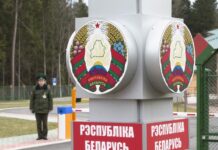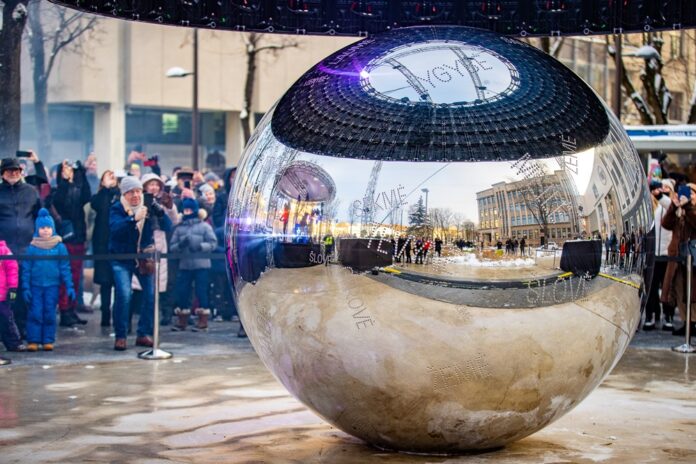
A sculpture for the only uniquely Lithuanian letter ė was unveiled in Kaunas on January 6. The work by sculptor Tadas Vosylius, entitled Taškas (Dot), is intended to express the uniqueness of the Lithuanian language.
Tadas Vosylius is an artist representing interdisciplinary art, using unconventional materials, sound, video recordings, and internet technology in his work. He studied sculpture at the Vilnius Academy of Arts at Kaunas and received a master’s degree in 2005. Since 2008 he has been a lecturer at the Academy and the Kaunas University of Technology.
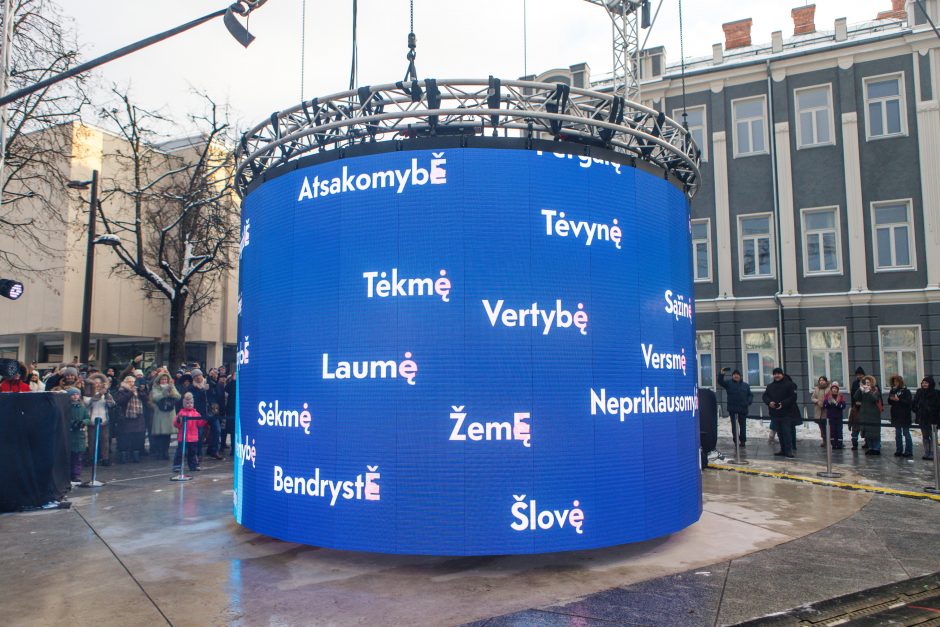
The symbolic dot weighs four tonnes and is one and a half metres in diameter. It is made of stainless steel and is engraved with Lithuanian words with the letter ė. “I used a mirrored surface, and the words on it complement or speak to the idea,” Vosylius said.
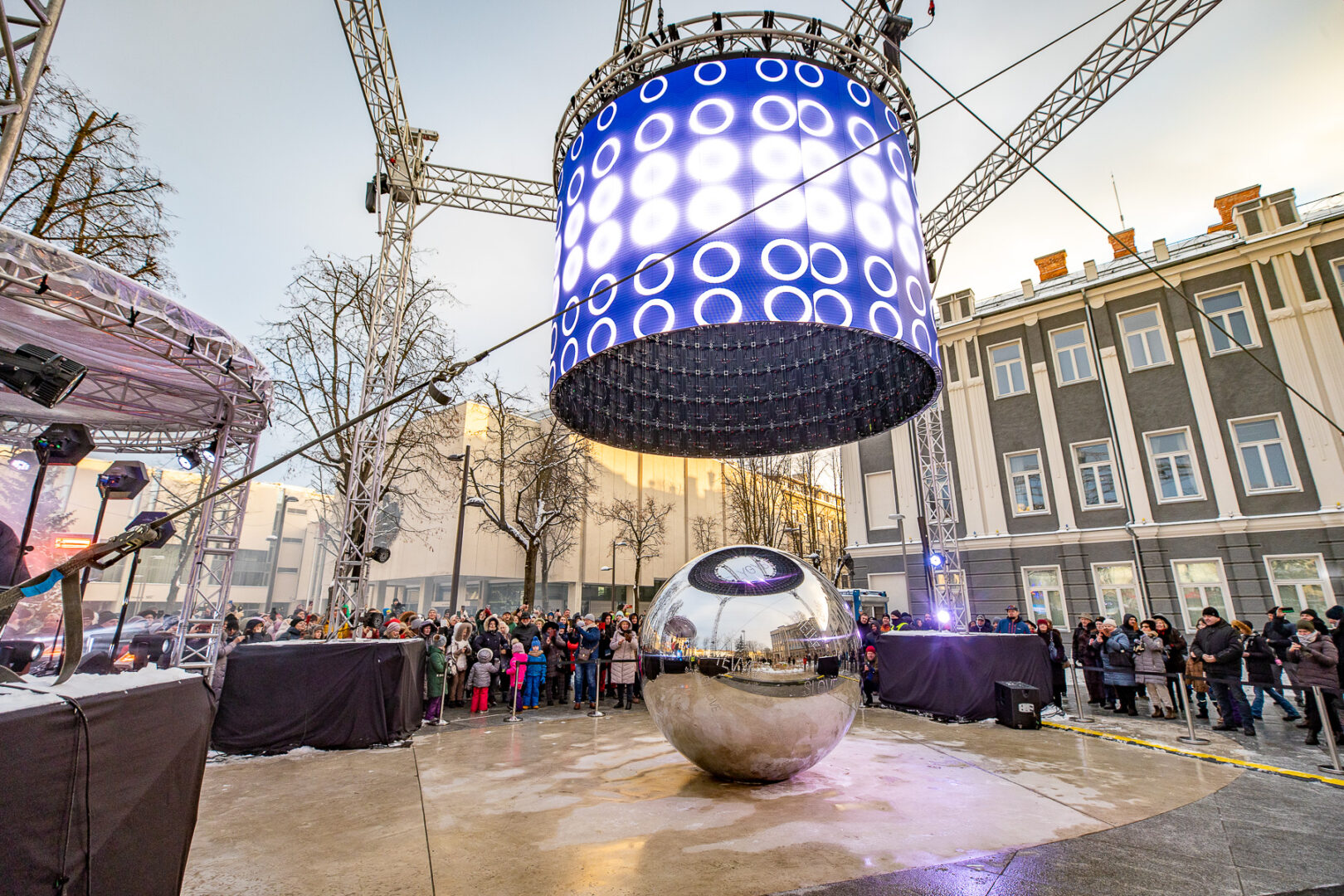 The letter ė came into being when the Lithuanian texts were first written. The letter was first recorded in Lithuanian grammar in the 17th century. Violeta Meiliūnaitė, chair of the Lithuanian Language Commission, explained that the Latin alphabet didn’t completely reflect Lithuanian pronunciation. Daniel Klein, who published the first printed grammar book of the Lithuanian language (Grammatica Litvanica, written in Latin), coined the distinctive Lithuanian letter ė. He also wrote a Lithuanian dictionary, but that was left unpublished. The very first published work in Lithuanian, the Catechism by Martynas Mažvydas, contained no dotted e’s. Among other functions, they are essential in distinguishing cases among nouns ending in “ė”.
The letter ė came into being when the Lithuanian texts were first written. The letter was first recorded in Lithuanian grammar in the 17th century. Violeta Meiliūnaitė, chair of the Lithuanian Language Commission, explained that the Latin alphabet didn’t completely reflect Lithuanian pronunciation. Daniel Klein, who published the first printed grammar book of the Lithuanian language (Grammatica Litvanica, written in Latin), coined the distinctive Lithuanian letter ė. He also wrote a Lithuanian dictionary, but that was left unpublished. The very first published work in Lithuanian, the Catechism by Martynas Mažvydas, contained no dotted e’s. Among other functions, they are essential in distinguishing cases among nouns ending in “ė”.
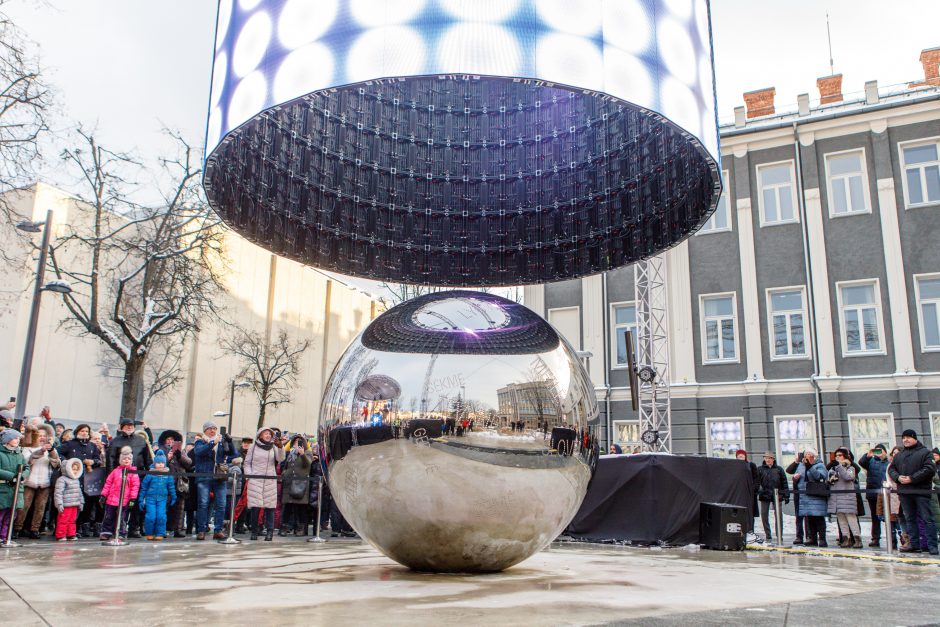 The design of the sculpture for the letter ė was chosen from 40 proposals. The sculpture was gifted to Kaunas by ACME Group (a socially responsible group of Lithuanian capital companies bringing the latest technologies to the Baltic countries). Project initiators hope the sculpture will be a reminder of the uniqueness of the Lithuanian language and the importance of preserving Lithuanian identity.
The design of the sculpture for the letter ė was chosen from 40 proposals. The sculpture was gifted to Kaunas by ACME Group (a socially responsible group of Lithuanian capital companies bringing the latest technologies to the Baltic countries). Project initiators hope the sculpture will be a reminder of the uniqueness of the Lithuanian language and the importance of preserving Lithuanian identity.








